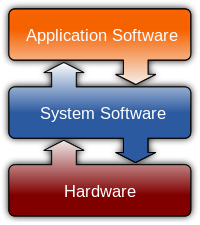ANONYMOUS wrote:
> Hi, I was just wondering, with the theory questions, how the marks are given. Is it possible to see some sort of rubric to see how these types of questions are marked, as you showed for the coding questions?
Each of the non-programming questions are different, no single rubric covers them all, and there's no single correct answer or approach to answering a question.
Each is a short-answer question which, not surprisingly, receives the highest marks if you answer the question asked - it's disappointing to see so many students simply write down correct information, but do not answer the question. The goal of each question, the goal of all assessment, is for you to demonstrate what you know about a distinct 'topic'. The question itself defines the 'bounds' of what needs to be discussed, explained, drawn, compared, proved.
If a question asks you to compare two concepts or terms X and X, then first describe or define what you understand both X and Y to be or to mean, and then compare them. If asked to contrast X and Y, same approach, describe the differences between X and Y.
If a question asks (requires) you to draw a diagram, and then to explain a concept with respect to that diagram, then (not surprisingly) draw a diagram. Label the diagram with words or letters, 'A', and refer to those labels in your explanation. Again, it's disappointing to see how many students simply write down correct information, but do not draw a diagram. If you're asked to draw a diagram, then you're being assessed on that diagram, and your ability to explain it. In our short answer questions that ask for a diagram, a relevant correct diagram contributes about half the marks for that question. Similarly, you're always welcome to contribute to your answer, to further demonstrate your understanding, by including and explaining a relevant diagram - even if the question doesn't explicitly ask for a diagram.
_____
Personally I'm bemused (not a derogatory word) by the recent 'growth' in students being unable to understand what a question is asking. It's a recent phenomenon that has emerged (in this unit) over just the past 2 years. As this is a second-year university unit, the ability to comprehend what a question is asking, and knowing how to construct an answer/argument, must have been a concept you've met many times, even in high-school.
Could you, or any other students, please identify any non-programming question from the past 3 exam papers that is unclear in what it is asking? Are there any terms/concepts in those questions that you cannot find in lecture notes, or in the recommended readings listed with each lecture on our Schedule page?
I'm happy to point students at teaching materials that discuss the relevant concepts asked in any question, but the actual *answer* to any question - 'telling a story' - requires you to first understand the material, and often to be able to relate it to other concepts in the unit.


